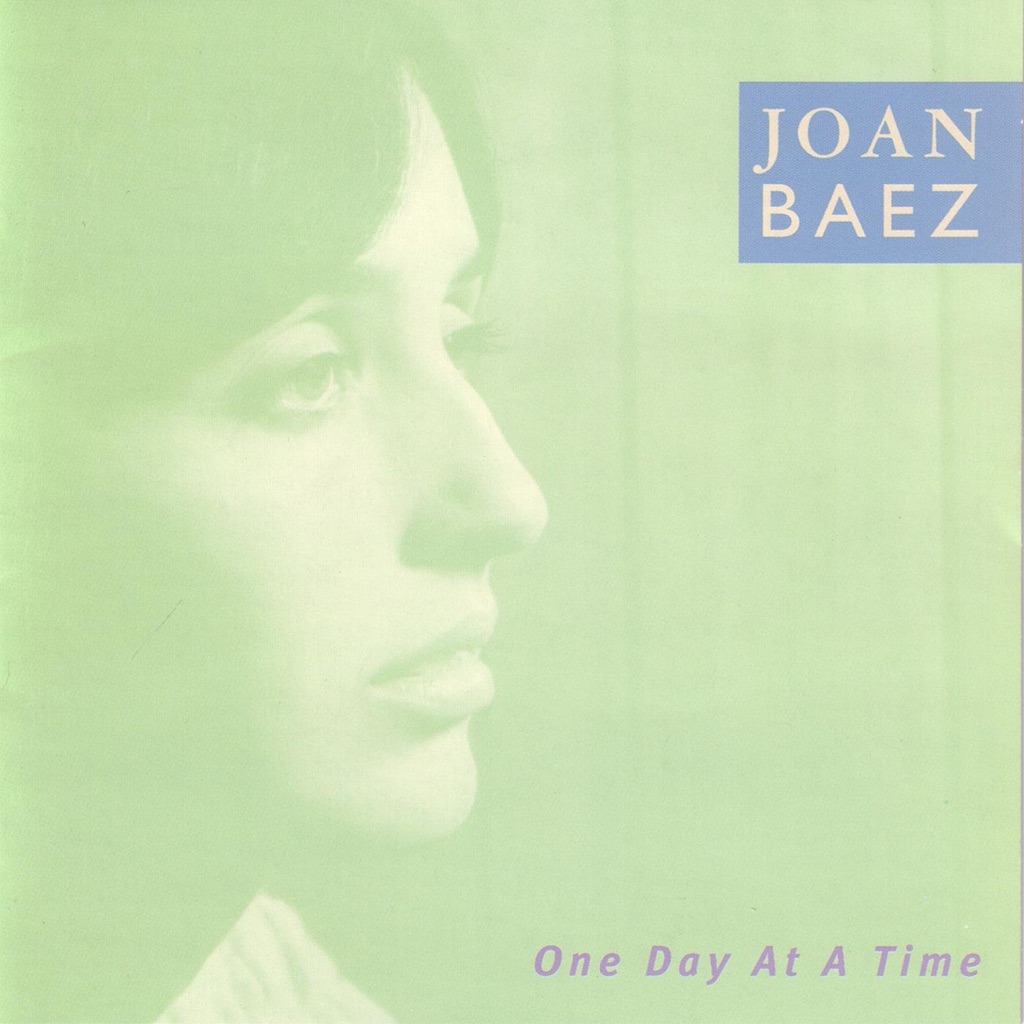
One Day At a Time
Having enjoyed her Nashville experience recording an album of Dylan songs (*Any Day Now*) and an album for her husband (*David\'s Album*) in the same sessions, Joan Baez soon made Tennessee a frequent spot for cutting her records. This let her work with top musicians who could give her tunes a country feel, and it inspired her to cover country songs at a time when most listeners associated country music with right-wing politics the way they associated folk music with the left wing. The traditional Cajun number \"Jolie Blonde\" and Willie Nelson\'s \"I Live One Day at a Time\" sounded as natural in her hands as Earl Robinson\'s \"Joe Hill\" and Pete Seeger\'s \"Carry It On.\" Her take on the classic \"Long Black Veil\" is flawless. Bonnie Bramlett\'s \"Ghetto\" is a timely touch. The excellent \"Sweet Sir Galahad\" and \"A Song for David\" were the first two songs written solely by Baez to appear on one of her albums. This reissue adds two Merle Haggard covers, \"Sing Me Back Home\" and \"Mama Tried,\" sung as duets with Jeffrey Shurtleff.
For the first time since 1992,Rolling Stone'sdefinitive classic returns to the scene, completely updated and revised to include the past decade's artists and sounds. When it comes to sorting the truly great from the merely mediocre, the enduring from the fleeting,The New Rolling Stone Album Guideprovides music buffs and amateurs alike with authoritative guidance from the best voices in the field. Filled with insightful commentary, it not only reviews the most influential albums of all time, but also features biographical overviews of key artists' careers, giving readers a look at the personalities behind the music.This fourth edition contains an impressive -- 70 percent -- amount of new material. Readers will find fresh updates to entries on established artists, hundreds of brand-new entries on the people and recordings that epitomize the '90s and the sounds of the 21st century -- from Beck to OutKast to the White Stripes and beyond -- along with a new introduction detailing changes in the music industry.Celebrating the diversity of popular music and its constant metamorphoses, with thousands of entries and reviews on every sound from blues to techno,The New Rolling Stone Album Guideis the only resource music lovers need to read.

